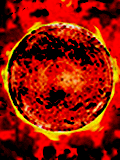PA Standard 3.4.12A: Apply concepts about the structure and properties of matter.
Anchor Assessment S11.A.1.1: Analyze and explain the nature of science in the search for understanding the natural world and its connection to technological systems.
Anchor Assessment S11.A.1.2: Identify and analyze the scientific or technological challenges of societal issues; propose possible solutions and discuss implications.
Anchor Assessment S11.A.1.3: Describe and interpret patterns of change in natural and human-made systems.
Anchor Assessment S11.A.2.1: Apply knowledge of scientific investigation or technological design to develop or critique aspects of the experimental or design process.
Anchor Assessment S11.A.2.2: Evaluate appropriate technologies for a specific purpose, or describe the information the instrument can provide.
Anchor Assessment S11.A.3.2: Compare observations of the real.
Anchor Assessment S11.A.3.3: Compare and Analyze repeated processes or recuring elements in patterns.
Anchor Assessment S11.B.1.1: Explain structure and function at multiple levels of organization.
Anchor Assessment S11.C.1.1: Explain the relationship between the structure an properties of matter.

